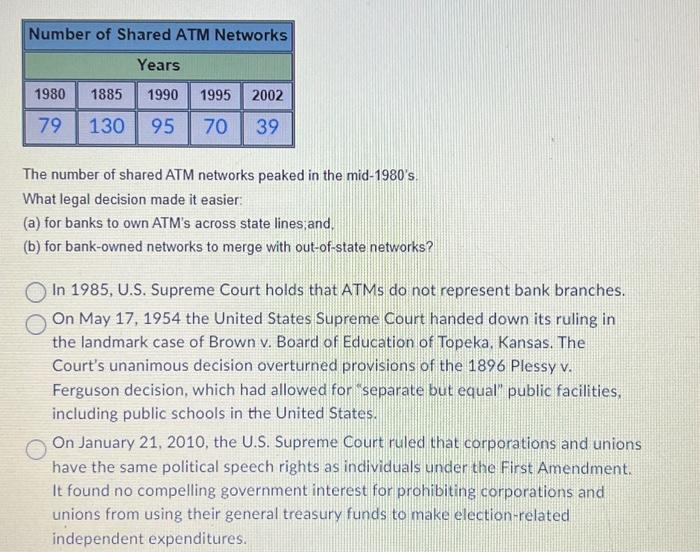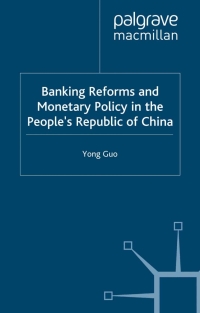Most consumer loans fall into two broad categories: Legal loans and Illegal loans. double-declining balance loans and straight-line loans. Closed-End Loans (Installment loans) and Open-End loans From 1985 through 2002, there was a steady in the concentration in ATM transactions: decrease collaspe increase Question 6(1.05 points) The Pew Charitable Trusts reported in June 2015 that about million Americans use prepaid cards such as RushCard regularly, up about 50% between 2012 and 2014, with many treating them like bank accounts and having their pay checks directly deposited to the card. 23 The number of shared ATM networks peaked in the mid-1980's. What legal decision made it easier: (a) for banks to own ATM's across state lines;and. (b) for bank-owned networks to merge with out-of-state networks? In 1985, U.S. Supreme Court holds that ATMs do not represent bank branches. On May 17, 1954 the United States Supreme Court handed down its ruling in the landmark case of Brown v. Board of Education of Topeka. Kansas. The Court's unanimous decision overturned provisions of the 1896 Plessy v. Ferguson decision, which had allowed for "separate but equal" public facilities, including public schools in the United States. On January 21, 2010, the U.S. Supreme Court ruled that corporations and unions have the same political speech rights as individuals under the First Amendment. It found no compelling government interest for prohibiting corporations and unions from using their general treasury funds to make election-related A legal decision in 1985 that removed a major regulatory barrier to creating and expanding interstate EFT networks. In 1985, U.S. Supreme Court holds that ATMs do not represent bank branches. On May 17, 1954 the United States Supreme Court handed down its ruling in the landmark case of Brown v. Board of Education of Topeka, Kansas. The Court's unanimous decision overturned provisions of the 1896 Plessy v. Ferguson decision, which had allowed for "separate but equal" public facilities, including public schools in the United States. On January 21, 2010, the U.S. Supreme Court ruled that corporations and unions have the same political speech rights as individuals under the First Amendment. It found no compelling government interest for prohibiting corporations and unions from using their general treasury funds to make election-related independent expenditures










